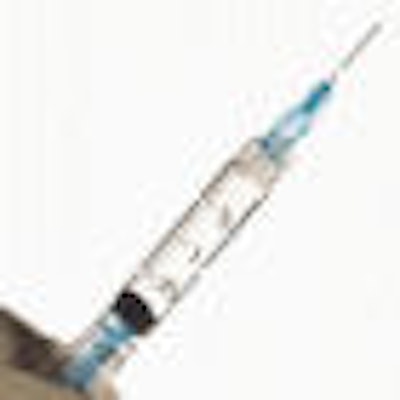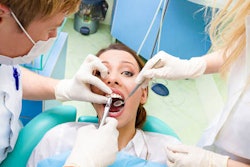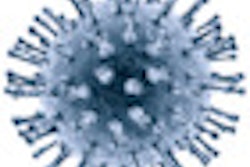
Can using a sophisticated plastic model of the teeth, gums, and oral cavity help dental students learn to give local anesthesia injections? A study by Dutch dentistry professors suggests it can (Journal of Dental Education, August 2010, Vol. 74:8, pp. 876-879).
Researchers from VU University Medical Centre and Academic Centre for Dentistry in Amsterdam randomly selected second-year dental students to practice on a training model they'd constructed. It is largely anatomically correct -- except for the absence of an important landmark, the pterygomandibular raphe -- and includes a buzzer that sounds when the needle is placed in the correct location. The students then performed a single mandibular-block injection on their fellow students.
The students who first practiced on the model were reported by the recipients of the injection to be significantly more confident when administering the injection than those who had not practiced on the model. This despite the fact that the students who practiced did not report being more confident in giving the injections than those who had not practiced.
Does practice make perfect?John Yagiela, D.D.S., Ph.D., a professor and chair of anesthesiology and program director of the Dental Anesthesiology Training Program at the University of California, Los Angeles, noted that it makes sense that practicing on a model could increase confidence and accuracy. However, the study included some uncontrolled factors, making the results difficult to interpret, he said.
"You wonder, for example, whether simply having students play with the syringe might have given them some greater facility in making an injection, while use of the model itself was secondary," Dr. Yagiela said in an interview with DrBicuspid.com. "Also, as the authors themselves point out, the student recipients of the injections might possibly have known who had practiced on the model by talking among themselves outside of the classroom. That could have been controlled for by blindfolding the recipients when they got the injection."
He also questioned whether the ostensible benefits from using the practice model would extend beyond the one injection included in the study.
"Despite these limitations, it was a good study -- it's a good concept and should be pursued," Dr. Yagiela said. "Ultimately, to accept what may be a high cost for the purchase of these models, the benefits would have to be more clearly proved."
Details of the studyBetween them, lead investigators Henk Brand, Ph.D., and Jacques Baart, D.D.S., have several decades of experience in teaching dental anesthesia. They and the rest of their team used a Frasaco working model AG-3. They modified the model by extending the base in a dorsocranial direction to represent the ascending ramus of the mandible.
 The Frasaco AG-3 training model modified by researchers at the Academic Centre for Dentistry Amsterdam. Image courtesy of Henk Brand, Ph.D.
The Frasaco AG-3 training model modified by researchers at the Academic Centre for Dentistry Amsterdam. Image courtesy of Henk Brand, Ph.D.
The study included 65 second-year dental students who attended a regular lecture program on local anesthetic injection, comprising four 45-minute classes. Then every third student (22 in all) was invited by personal e-mail to practice individually with the training model. They also were asked not to tell their fellow students that they had practiced.
The next day, all 65 students practiced administering one mandibular block on each other. The injection solution was 1.8 mL of articaine with 1:100,000 epinephrine.
The students then were asked to independently fill out a questionnaire that had two parts. The first part concerned their experience in giving the injection, asking such questions as whether the patient was at ease and whether his or her hand trembled while making the injection. The second part addressed their receiving an injection. They were asked whether the person who administered it was confident and reassuring, whether the injection of the needle or anesthetic was painful, and whether they had a tingling lip or tongue after the injection. Each response was on a five-point Likert scale.
The next stepsAfter unblinding and analyzing the questionnaire responses, the investigators found that the only parameter affected by practice was the report of recipients that the persons giving the injection were more confident (p = 0.021). Recipient reports of pain from needle insertion had the next biggest difference, but this was not statistically significant (p = 0.08).
While the model may have beneficial effects on local anesthesia training, Drs. Brand and Baart recommend further research on whether integrating the training model into small-group teaching improves students' learning curves and patients' experience and affects the rates of adverse events during anesthetic injection.
Copyright © 2010 DrBicuspid.com



















